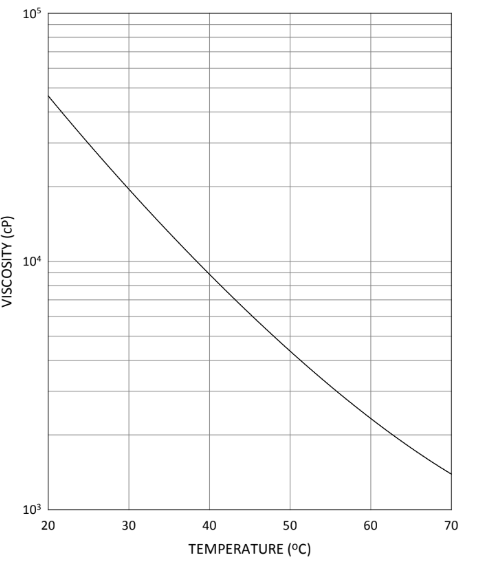Enhanced TDS
Identification & Functionality
- Blend
- No
- CASE Ingredients Functions
- Chemical Family
- Function
- Monomer
- Product Code
- MITM00362
- Single Ingredient
- Yes
- Technologies
- Product Families
Features & Benefits
- CASE Ingredients Features
- Performance Highlights
EBECRYL® 1710 is characterized by:
- Moderate viscosity
- Low color
UV/EB cured products containing EBECRYL® 1710 are characterized by the following performance properties:
- Improved adhesion
- Reduced film defects
- Good exterior durability
Applications & Uses
- Application Method
- Coating End Applications
- Compatible Substrates & Surfaces
- Cure Method
- Ink & Toner End Applications
- Markets
- Applications
- Product Applications
Formulated UV/EB curable products containing EBECRYL® 1710 may be applied via offset and screen printing as well as direct or reverse roll, offset gravure, metering rod, slot die, knife over roll, air knife, curtain and immersion coating methods. EBECRYL® 1710 is recommended for use in:
- Silk screen inks
- Coatings on plastics such as polycarbonate, polyester, polyolefins, and PVC
Typical use level is 20-60% by weight of the total formulation. EBECRYL® 1710 exhibits excellent compatibility with most acrylates.
Properties
- Physical Form
Technical Details & Test Data
- Viscosity Reduction

Illustrates the change in viscosity of EBECRYL® 1710 with increasing temperature.
Packaging & Availability
Principal Information
- Group Principal Number
- S000001
- Principal
Storage & Handling
- Storage Conditions
- Care should be taken not to expose the product to high temperature conditions, direct sunlight, ignition sources, oxidizing agents, alkalis or acids. This might cause uncontrollable polymerization of the product with the generation of heat.
- Storage and handling should be in stainless steel, amber glass, amber polyethylene or baked phenolic lined containers. Procedures that remove or displace oxygen from the material should be avoided.
- Do not store this material under an oxygen free atmosphere. Dry air is recommended to displace material removed from the container. Wash thoroughly after handling. Keep container tightly closed. Use with adequate ventilation.
Other
- Appearance
- Clear liquid
- Appearance (SDS)
- Liquid
- Color (SDS)
- Yellowish
- IATA/ICAO Proper Shipping Name
- Environmentally hazardous substance, liquid, N.O.S.
- IATA/ICAO Technical name (N.O.S.)
- Hexamethylene diacrylate
- IATA/ICAO UN Number
- UN3082
- IMO/IMDG Proper Shipping Name
- Environmentally hazardous substance, liquid, N.O.S.
- IMO/IMDG Technical name (N.O.S.)
- Hexamethylene diacrylate
- IMO/IMDG UN Number
- UN3082
- Item Number
- Odor (SDS)
- Ester acrylate
- Other Hazards
- Polymerization may occur from excessive heat, contamination or exposure to direct sunlight .
- Protect from Freezing
- Yes
- TDG Canada Proper Shipping Name
- Environmentally hazardous substance, liquid, N.O.S.
- TDG Canada Technical name (N.O.S.)
- Hexamethylene diacrylate
- TDG Canada UN Number
- UN3082
- Temperature Control
- Yes
- USA/DOT Proper Shipping Name
- Environmentally hazardous substance, liquid, N.O.S.
- USA/DOT Technical name (N.O.S.)
- Hexamethylene diacrylate
- USA/DOT UN Number
- UN3082
- Application Information
Value Units Test Method / Conditions Dosage (Use Level) 20.0-60.0 %(W/W) %(W/W) - Mechanical Properties
Value Units Test Method / Conditions Elongation 3.6 % % at break, UV cured 125 μ thick films Tensile Modulus 315000.0 psi psi at break, UV cured 125 μ thick films Tensile Strength 6440.0 psi psi at break, UV cured 125 μ thick films - Optical Properties
Value Units Test Method / Conditions Color Scale max. 1.0 Gardner Gardner Gardner Color Scale - Physical Properties
Value Units Test Method / Conditions Density 1.07 g/mL g/mL at 25°C Glass Transition Temperature (Tg) 82.0 °C °C Dynamic Mechanical Analysis (DMA) at break, UV cured 125 μ thick films Storage Temperature 39.0-140.0 °F °F Viscosity 24050.0-27950.0 cPs cPs at 25°C - SDS Physical and Chemical Properties
Value Units Test Method / Conditions Boiling Point (SDS) min. 100.0 °C °C Density (SDS) min. 1.0 g/cm³ g/cm³ Flash Point (SDS) min. 100.0 °C °C Setaflash Vapor Pressure (SDS) max. 1.33 hPa hPa at 20°C Viscosity (SDS) 24050.0-27950.0 mPa.s mPa.s at 25°C Volatile Content (SDS) max. 0.5 % % - Shelf Life & Stability
Value Units Test Method / Conditions Shelf Life 0.0 d d
